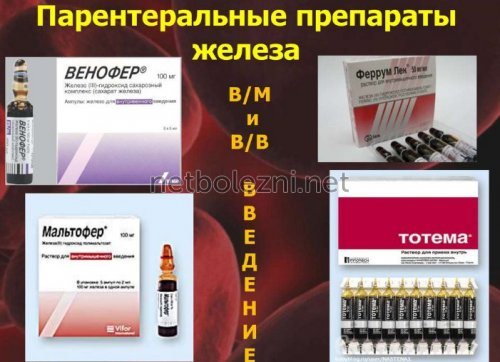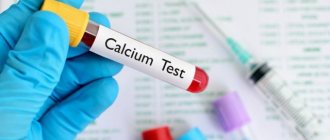Complexes with this research
Blue blood Assessment of iron deficiency and the effectiveness of the iron metabolism mechanism RUR 3,010 Composition
Male anti-aging diagnostics Monitoring of key indicators in men aged 40+ RUR 13,300 Composition
Vegetarians and vegans Metabolic control while avoiding animal products RUB 5,820 Composition
IN OTHER COMPLEXES
- Advanced women's anti-aging diagnostics RUB 28,680
- Monitoring the diet of a nursing mother RUB 2,940
- Advanced male anti-aging diagnostics RUB 33,710
- Women's anti-aging diagnostics RUB 12,070
- Anti-aging diagnostics in postmenopause RUB 12,630
Blood test for ferritin - what is it?
The health of the human body depends on the iron found in red blood cells. It supplies oxygen to cellular tissues and systems.
On a note!
Without normal iron levels, the red blood cells in the body cannot provide the necessary amount of air. But it is important to understand that too much iron can cause harm.
Both elevated and decreased readings can indicate the presence of a serious health problem. When a doctor suspects that a patient has a deficiency of Fe or an excess of it, he gives a referral for a ferritin test. It measures the level of accumulated Fe, which allows the specialist to see the overall clinical picture. The amount of protein is determined during the study of venous blood.
Ferritin is not iron, but a protein that it stores and releases as needed. Protein is present in the blood in small quantities. Its greatest amount is in the cellular tissue of the liver (hepatocytes) and immunity (reticuloendothelial cells). The protein is stored in cell tissue until more red cells are needed to be created. The body will signal to release ferritin. It will then bind to transferrin.
Transferrin is a protein that, in symbiosis with ferritin, moves it to where red cells are produced.
Detailed description of the study
Ferritin is a protein complex with iron ions. It is found in muscle, liver, spleen, bone marrow, reticulocytes (red blood cell precursor cells) and serum and is a form of iron reserve in the human body - one ferritin molecule can bind up to 4,000 iron atoms. When there is a lack of iron in the body, the ferritin reserve begins to be used. Thanks to this, the level of iron in the blood remains relatively constant.
A decrease in plasma ferritin levels serves as an indicator of iron deficiency and may indicate anemia (anemia). The most common manifestations of this condition are weakness and fatigue, drowsiness, pale skin, headache, dizziness, darkening of the eyes and tinnitus when changing body position.
The risk group for developing anemia includes:
- Women of childbearing age due to monthly blood loss;
- Pregnant women due to increased resource consumption of the body;
- Vegetarians and vegans due to insufficient intake of iron from food;
- People with gastrointestinal disorders due to iron malabsorption;
- Patients with chronic hemorrhoids;
- People over 65 years of age.
An increase in serum ferritin concentration can be observed in pathologies such as:
- Destruction of muscle tissue;
- Fractures of large bones;
- Extensive hematomas;
- Injuries to the spleen and inflammatory processes in it;
- Hematological diseases;
- Liver damage (viral hepatitis, liver necrosis);
- Kidney failure.
Determination of ferritin levels is used for the diagnosis and differential diagnosis of not only iron deficiency, but also the pathologies listed above.
Ferritin
Ferritin
- the main protein that stores iron and serves as an indicator of iron reserves in the body. Ferritin is a spherical protein in the core of which there is a complex of iron hydroxide and iron phosphate. One molecule of ferritin can contain up to 4000 molecules of iron. Ferritin is synthesized in the cells of the organs of the reticuloendothelial system. Contained in all body cells and body fluids, but reticulocytes, macrophages and reticuloendothelial cells of the liver are richest in it; also found in the intestinal mucosa and plasma.
The inclusion of iron in its composition requires the oxidation of Fe2+ to Fe3+. Under physiological conditions of iron metabolism, ferritin plays an important role in maintaining iron in a soluble, nontoxic, and biologically useful form. As a result of polymerization of soluble ferritin, insoluble hemosiderin is formed. Serum ferritin contains 20–25% iron; its concentration is a good indicator of iron reserves in healthy people and in uncomplicated iron deficiency conditions.
A decrease in ferritin levels in the blood serum indicates their depletion and makes it possible to diagnose iron deficiency in the early stages. An increased concentration of ferritin in the blood is observed with excess iron (hemochromatosis), inflammatory diseases (pulmonary infections, osteomyelitis, arthritis), liver damage (acute viral hepatitis, etc.). An increase in ferritin concentration is often observed in leukemia, lymphogranulomatosis, and some malignant tumors. During pregnancy, ferritin levels can decrease gradually, by 50% by the 20th week, by 70% in the third trimester of pregnancy.
The concentration of ferritin in the blood can serve as a manifestation of the acute phase response to the inflammatory reaction, since ferritin is one of the acute phase proteins. If a person truly has iron deficiency, the acute-phase increase in transferrin is not significant. In conditions with excess iron and some chronic diseases, serum ferritin does not allow a correct assessment of the reserves of iron available for metabolism.
In addition to being used as an indicator of iron stores in the body, determination of ferritin concentration is important for the differential diagnosis of iron deficiency anemia and anemia of chronic diseases. One of the main mechanisms of anemia of chronic diseases is the redistribution of iron into the cells of the macrophage system, which is activated during inflammatory or tumor processes. Iron accumulates in macrophages in the form of ferritin, its transfer from ferritin to transferrin is disrupted, which entails a decrease in serum iron levels. Under these conditions, an erroneous diagnosis of iron deficiency anemia and the prescription of iron supplements (parenterally) can lead to the development of secondary hemosiderosis and aggravation of the patient's situation.
Differential diagnosis of true and redistributive iron deficiency is possible only by determining the level of serum ferritin. In oncopathology, especially tumor and metastatic lesions of the bone marrow, ferritin serves as a kind of tumor marker. Excessive iron intake after transfusions or hemodialysis leads to a temporary significant increase in serum ferritin levels.
Indications:
- suspicion of hemochromatosis;
- differential diagnosis of anemia;
- tumors;
- chronic infectious and inflammatory diseases.
Preparation
It is recommended to donate blood in the morning, from 8 to 11 o’clock. Blood is taken on an empty stomach, after 6–8 hours of fasting. It is allowed to drink water without gas and sugar. On the eve of the examination, food overload should be avoided. If you are taking medications, be sure to consult your doctor.
Interpretation of results
Units of measurement: µg/l.
Increased ferritin levels:
- excess iron in hemochromatosis;
- liver pathology;
- acute lymphoblastic and myeloblastic leukemia;
- acute and chronic infectious and inflammatory diseases: osteomyelitis, pulmonary infections, burns, systemic lupus erythematosus, rheumatoid arthritis;
- lymphogranulomatosis;
- mammary cancer;
- starvation;
- taking oral contraceptives.
Decreased ferritin levels:
- lack of iron in food;
- malabsorption due to gastrointestinal lesions, celiac disease;
- Iron-deficiency anemia;
- pregnancy;
- active growth.
Ways to saturate the body with ferritin
Based on the results of a complete examination of the woman, the specialist will determine the main cause provoking the anemic condition. In cases where the cause is not related to a pathological condition, it is enough to follow a special diet, enriching the diet with iron-containing foods. If the tests are not the best, you will have to resort to drug treatment to restore lost protein reserves.
[media=
https://youtu.be/x-tAK3gxY8k
]
Product Help
Among vegetables and fruits, red and orange products are of particular value - carrots and tomatoes, apricots and pomegranates, beets, red berries. It is important not to forget about red meat (beef) and fish, green leafy vegetables, grains and legumes, dark chocolate and cocoa powder. Beef liver, eggs, beans, strawberries and blueberries, even apples are also rich in iron.
Rules for the use of food additives
If a woman's blood test for ferritin shows its deficiency, choosing food supplements containing two types of iron - heme and chelate - can increase the indicator. These forms of the micronutrient are among the most easily absorbed compounds, but supplemental vitamin supplementation may be required. Therapy will be beneficial if you remember some rules for using nutritional supplements:
- Fe+-based products can cause nausea, dizziness, chills or back pain;
- to enhance the absorption of iron, the capsules are washed down with orange juice containing a large dose of vitamin C;
- Supplements should not be taken with drinks containing caffeine or milk, or taken together with calcium supplements and antacids.

To be fully absorbed by the body, iron undergoes a transformation process from the trivalent form of the substance to the divalent one. It is this form of microelement that is well absorbed by organs and systems. The reason for the lack of ferritin may also be associated with infrequent food intake and poor chewing, which inhibits the process of converting Fe+ into an easily digestible form. Among the supplements, the most popular are Bisglycinate Chelate, Lactoferrin, Lysine, but for better absorption of Fe+, the help of vitamin C is important.
How to increase iron levels with injections?
Vitamin preparations that provide a woman with protection from hypoferritinemia can be infused intravenously. The injection technique is relevant for acute microelement deficiency due to the loss of large volumes of blood, as well as for diseases associated with delayed absorption of the element by organ tissues.

Instead of intravenous delivery of iron solution, in some situations, injections of liquid vitamin B12 are prescribed, which increases the absorption of Fe+.
The prescription of parenteral solutions is justified if there is no result from the use of nutritional supplements. But injections do not exclude the development of dangerous side effects.
Among the drugs for intravenous administration that can increase ferritin, the best known solution is Venofer and Ferinject. The dosage of Venofer is calculated taking into account the patient’s weight and hemoglobin level. Ferinject injections are intended for a single injection of 20 ml of solution, which corresponds to 1000 mg of iron. The medication Ferrum Lek is administered only intramuscularly, the CosmoFer solution is universal - it can be injected into a muscle or injected into a vein. The dosage of the medicine depends on the route of administration.

How to get tested for ferritin? Cost of analysis
To find out your current indicator, you need to donate blood from a vein. This can be done in any private laboratory - Hemotest, Invitro, etc. I did this at Invitro; together with blood sampling, the analysis cost 870 rubles (2019). I’m not sure that you will be able to get a referral for this test for free, but try checking with your therapist.
Before analysis, standard preparation is required:
- Do not eat for about 8-12 hours, i.e. blood is donated strictly on an empty stomach
- No smoking for an hour
- If possible, stop taking all vitamins and supplements a few days before the test.
- Don't drink coffee
How to raise ferritin?
First of all, it should be understood that a change in ferritin levels is a consequence, but not a cause, therefore it is impossible and makes no sense to influence it in isolation.
Ferritin has decreased: what to do?
* Replenish iron levels with medications.
* Look for the cause: a disease or condition that led to a change in ferritin concentration and, based on this, carry out treatment under medical supervision.
Food and iron
An adult does not need much iron per day: men - 10-12 mg, women - 20-30 mg (more, because the microelement is lost during menstruation). A healthy person who eats a balanced diet gets enough iron every day.
Ferrous or heme iron
It is well absorbed; the ingredients of other foods do not affect its absorption. Contained in products of animal origin: meat, offal (liver, kidneys), fish and seafood.
Ferric or non-heme iron
Heme iron is less absorbed than heme iron. Contained in products of plant origin. “Champions” in this category: apple, nuts, pomegranate, whole grains, celery, beets, legumes.
Increases iron absorption
Vitamin C (including products with a high content), B vitamins, pepsin (digestive enzyme), folic acid and copper.
What does a ferritin blood test show?
Iron is required by the body to maintain life. Proteins in the human body produce a reserve of approximately 30% of the total Fe level. This element begins to be wasted when there is not enough of it for various reasons (for example, little of it comes from food).
On a note!
The amount of protein in the blood decreases much earlier than symptoms of anemia appear.
What ferritin shows in elevated levels during coronavirus is also a relevant topic. An excess indicates inflammation and health problems.











